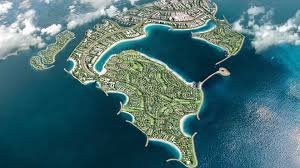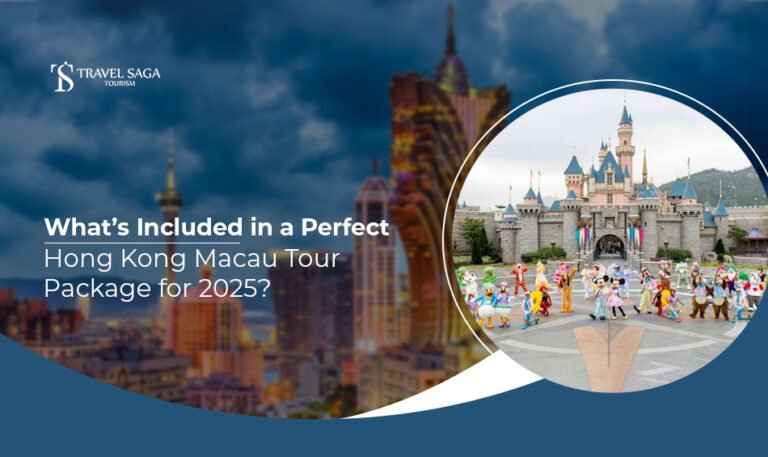In the modern world, where digital presence is everything, the role of digital advertising in the tourism industry has become more crucial than ever before. Travel businesses need to find effective ways to attract potential customers, engage them, and convert them into loyal travelers. Among the various forms of online advertising, travel banner ads stand out as one of the most versatile and impactful methods to grab attention, promote destinations, and boost bookings. This article explores the role of travel banner ads in digital tourism marketing, their importance, best practices, and strategies for creating high-converting ads.
Create Your Campaign & Get Results!
What Are Travel Banner Ads?
Travel banner ads are graphical advertisements designed specifically to target potential travelers across websites, search engines, and social media platforms. These ads often feature enticing visuals of destinations, travel packages, or special offers and are displayed on various types of websites, from travel blogs to booking platforms. Travel banner ads typically appear at the top or side of web pages, drawing attention through their size and placement.
Unlike text-based ads, banner ads are designed to be more visually appealing, using images, motion graphics, or even short videos to catch the eye of the user. These ads are generally optimized for mobile devices, considering the increasing trend of mobile users browsing and booking travel online.
Why Travel Banner Ads Matter in Digital Tourism Marketing
The travel and tourism industry has always been highly competitive, with countless options available for every type of traveler. In this saturated market, creating an effective travel advertising strategy is essential. This is where travel banner ads play a significant role.
Immediate Visual Appeal
One of the biggest strengths of online travel banner ads is their ability to quickly capture attention. When placed strategically on relevant websites, these banners leverage attractive imagery of destinations, luxury resorts, or adventure travel experiences to draw potential customers in. An aesthetically pleasing image or an engaging offer can be enough to trigger curiosity, prompting users to click on the ad and explore further.
Broad Reach Across Multiple Channels
Another critical advantage of travel banner ads is their ability to reach a wide audience. Unlike traditional print advertising, which limits reach to a specific geographical area or demographic, online banner ads can be shown to users worldwide. This is particularly important in the travel industry, where tourists often come from all over the globe. By leveraging different online channels such as Google Ads, Facebook, or Instagram, travel businesses can easily target specific demographics, such as budget travelers, luxury seekers, adventure enthusiasts, and family vacationers.
Increased Brand Visibility
Banner ads, especially when strategically placed on high-traffic websites related to travel and tourism, can increase brand awareness significantly. Travelers often browse multiple sites before making a decision, and having consistent exposure through banner ads on various platforms can help reinforce the brand’s message and make it more recognizable.
Driving Traffic to Websites
Travel banner ads can also act as a direct traffic driver to your website. By including a compelling call-to-action (CTA), such as “Book Now” or “Discover Your Next Adventure,” banner ads can encourage users to click through to a landing page where they can learn more about your travel services, explore destinations, and even make a booking.
How to Create High-Converting Travel Banner Ads
Creating high-converting travel banner ads requires more than just a beautiful image and catchy headline. To maximize the effectiveness of your banner ads for travel business, consider the following key factors:
Focus on High-Quality Visuals
Since travel banner ads rely heavily on visual appeal, the images used should reflect the essence of the experience being marketed. Use high-quality, vibrant images that showcase the beauty of the destination or the excitement of the experience. For example, if you are advertising a tropical getaway, use images of pristine beaches, crystal-clear waters, and beautiful sunsets. A stunning visual can evoke emotions and create an immediate desire to explore more.
Incorporate Compelling Offers
Travel banner ads that feature special offers, discounts, or exclusive packages tend to perform better than those that don’t. Travelers are often looking for deals, especially when booking flights, hotels, or tours. By providing an exclusive limited-time offer or discount in your banner ad, you can create a sense of urgency that encourages users to click through.
Keep the Message Simple and Clear
Banner ads have limited space, so it’s essential to keep the messaging concise. Use a short headline that communicates the value proposition clearly. Avoid cluttering the ad with too much text. A simple headline such as “Save 30% on Your Next Adventure” combined with a clear CTA such as “Book Now” is usually sufficient to capture attention and drive action.
Use Clear and Strong CTAs
A call-to-action (CTA) is a critical component of any banner ad. It’s what encourages users to take the next step, whether it’s making a booking, subscribing to a newsletter, or exploring travel packages. Be sure to include a compelling CTA that’s easy to spot. Phrases like “Book Today,” “Start Your Journey,” or “Learn More” can motivate users to click through and engage with your brand.
Mobile Optimization
With the majority of travelers researching and booking their trips from mobile devices, ensuring your travel banner ads are optimized for mobile viewing is crucial. Use responsive design techniques that adjust the ad size and layout based on the device used. Ensure that the text is legible on smaller screens and that the images load quickly without losing quality.
Best Practices for Travel Advertising with Banner Ads
To maximize the effectiveness of travel advertising, here are some best practices you should follow when creating and managing online travel banner ads.
A/B Testing for Optimization
One of the most powerful tools for improving the performance of travel banner ads is A/B testing. This involves creating two versions of the same ad with slight variations—such as different images, headlines, or CTAs—and testing which version performs better. By running A/B tests on your banner ads, you can gain valuable insights into what resonates most with your audience and refine your strategy accordingly.
Targeting the Right Audience
The success of your banner ads heavily relies on reaching the right audience. Use targeting options provided by advertising platforms (Google Ads, Facebook, etc.) to ensure your ads are shown to users who are most likely to be interested in your travel offers. Targeting can be done based on demographics, location, interests, behavior, and even previous interactions with your website.
Retargeting for Better Conversion
Retargeting allows you to show banner ads to users who have already interacted with your website but didn’t complete a booking or action. Retargeting ads are incredibly effective in reminding potential customers about your travel offers and bringing them back to complete their purchase. A simple, well-timed reminder can often be the nudge someone needs to take action.
Use Dynamic Creative Optimization (DCO)
Dynamic Creative Optimization (DCO) allows you to personalize your travel banner ads based on the behavior and interests of each individual user. By showing users ads tailored to their past browsing behavior—such as showing a banner ad for a specific destination or a promotion for a hotel they previously viewed—you increase the chances of conversion. This level of personalization makes your ads more relevant and engaging.
Leverage 7Search PPC for Targeted Travel Advertising
7Search PPC is a lesser-known but highly valuable pay-per-click (PPC) advertising network that can help travel businesses gain exposure through cost-effective, targeted banner ads. It allows advertisers to create campaigns across a wide publisher network, giving your travel banner ads visibility across relevant travel blogs, forums, and niche websites.
The advantage of using 7Search PPC lies in its competitive pricing and focused targeting options. Smaller travel businesses or startups with tighter ad budgets can benefit significantly from 7Search’s cost-effective traffic. Additionally, the platform supports image-based and text-based ads, making it a flexible option for promoting travel offers, seasonal deals, or niche destinations. Integrating 7Search into your marketing strategy can supplement your Google or Facebook ads and expand your overall reach at a lower cost-per-click (CPC).
FAQs about Travel Banner Ads
What Are the Benefits of Travel Banner Ads?
Travel banner ads offer numerous benefits, including increased brand visibility, the ability to reach a broad audience, and the potential for high conversions when optimized correctly. They are an excellent way to showcase destinations and travel packages, drive traffic to your website, and promote special offers.
How Can I Improve My Travel Banner Ad’s Conversion Rate?
To improve your conversion rate, focus on high-quality visuals, a clear and concise message, a strong call-to-action, and strategic targeting. Additionally, A/B testing and retargeting can help refine your ads for better performance.
Are Travel Banner Ads Effective for Small Travel Businesses?
Yes, travel banner ads can be very effective for small travel businesses, especially if they use targeted advertising to reach the right audience. Even with a smaller budget, small businesses can compete in the digital space by utilizing platforms like Google Ads and Facebook to place their ads in front of potential customers.
How Do I Measure the Success of My Travel Banner Ads?
The success of your travel banner ads can be measured using key performance indicators (KPIs) such as click-through rates (CTR), conversion rates, return on investment (ROI), and engagement metrics. Most advertising platforms provide detailed analytics that can help you track and optimize your campaigns.
What Size Should My Travel Banner Ads Be?
The size of your banner ad will depend on where it is placed. Common banner sizes include 728×90 (Leaderboard), 300×250 (Medium Rectangle), and 160×600 (Wide Skyscraper). Make sure to check the specifications of the platform you are using to ensure your ads fit correctly.
Conclusion
In the world of digital tourism marketing, travel banner ads are a powerful tool for reaching potential travelers, increasing brand visibility, and driving conversions. By focusing on high-quality visuals, clear messaging, and targeting the right audience, travel businesses can effectively leverage banner ads to promote destinations, offers, and services. As the travel industry continues to evolve, banner ads will remain a key component of any comprehensive digital marketing strategy. By following best practices and continuously optimizing campaigns, travel businesses can create high-converting travel banner ads that not only capture attention but also convert clicks into bookings.





